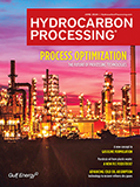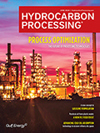2020 AFPM Summit: Rajant’s IIoT wireless kinetic mesh: Boosting petrochemical growth in Industry 4.0
Rajant’s IIoT wireless kinetic mesh: Boosting petrochemical growth in Industry 4.0
AL J. RIVERO, Rajant
As the petrochemical industry grows, so does competition within the market. To stay ahead of the game, petrochemical plants are turning to Industry 4.0 technologies as they seek to enhance the capabilities within the plant to yield more significant results through increased performance, while remaining fully aware of the need to continuously improve employee safety.
Industry 4.0 applications—such as augmented reality (AR), robotics, real-time equipment analytics, automation control, video surveillance and radio frequency identification (RFID) tracking—are adding value and enabling the industry to realize further productivity and efficiency gains. However, these safety-enhancing and potentially revenue-boosting technologies are dependent on a critical network infrastructure (FIG. 1) that ensures that an equilibrium between facility and production growth can be achieved while maintaining employee safety standards. Requirements such as the separate communication needs of employees, the need for networking infrastructure to be kept in explosion-proof enclosures (e.g., ATEX 0 / C1D1) as a precaution, and a constant, steadfast network due to the hazardous elements of the plant, are crucial for success.
Powering the IIoT. An Industrial Internet of Things (IIoT)-enabling network, more dynamic than Wi-Fi networks or two-way radio WAN, can give the petrochemical industry the prerogative to take advantage of the innovative technologies offered by Industry 4.0. The question for petrochemical plants is, “What technology can be relied upon to meet the critical requirements to deploy an IIoT network that keeps my employees safe and adds value?”

FIG. 1. Industry 4.0 applications are adding value and enabling the industry to realize further productivity and efficiency gains, but these safety-enhancing and potentially revenue-boosting technologies are dependent on a critical network infrastructure.
A feasible solution for petrochemical plants is to implement a mesh network topology—a resilient architecture constructed of nodes that allows a multitude of devices to connect wirelessly. The result is a node network that can communicate data across the network until it reaches its target destination.
Petrochemical operations rely on a roster of assets, which are often located in unforgiving terrains, and require reliable, high-bandwidth and mobile communications. For every aspect of exploration, extraction and production, these assets must always be carefully monitored and managed to ensure continuous operations and cost-efficiency. A mesh network can provide real-time, site-wide communications for the various personnel and assets crucial to the running of a petrochemical plant, including drills, wellheads, video cameras, smart meters, sensors, laptops and smartphones. It is, however, crucial that the contingent parts of the network are built for the job.
A BreadCrumb trail to operational enhancement. Rajant’s BreadCrumbs® are wireless nodes that are built for hazardous locations where ignitable concentrations of flammable gases, vapors or liquids can exist all or some of the time under normal operating conditions. Rajant can enable plants to deploy these nodes on fixed and mobile plant infrastructure and equipment to enable, for example, the maintaining of multiple immediate connections between peers while sending and receiving data on multiple frequency bands.
Rajant’s Private Kinetic Mesh networks, built with intrinsically safe BreadCrumbs, can dynamically connect the people, assets and devices that comprise every aspect of a plant’s current and future operations. The network offers benefits, which include reducing the total cost of ownership and simplifying the work demands of employees by allowing them to centralize their communications to a single device.
These self-healing, peer-to-peer industrial wireless networks give petrochemical plant operators the communication flexibility, reliability, high performance and scalability they need to maximize productivity and innovation. In turn, risk is minimized, downtime and costs are decreased, and security is increased to keep them ahead of the competition.
A Rajant Kinetic Mesh network is the right communication solution for your smart and safe petrochemical plant operations.
To learn more about Rajant’s offerings or to schedule a demo of the solutions, go to rajant.com/markets/petrochemical-plants/ to learn more.
ABOUT THE AUTHOR

AL J. RIVERO, PE, is Director of Oil and Gas at Rajant, and is responsible for working and engaging with clients who seek to implement a secure, reliable IIoT and mobility strategy for their oil and gas operations. He works closely with clients to develop a strategic technology transition plan that ensures a reliable and secure migration of technologies. He has more than 30 years of experience in various roles, ranging from staff engineer and project manager to operations management and technology management within the Chevron companies. He also has extensive IT/OT integration project experience, having worked with SAP, JDE, ESRI and a variety of automation and SCADA/DCS solutions for the upstream, midstream refining and petrochemical segments. The author can be contacted at arivero@rajant.com.






Comments